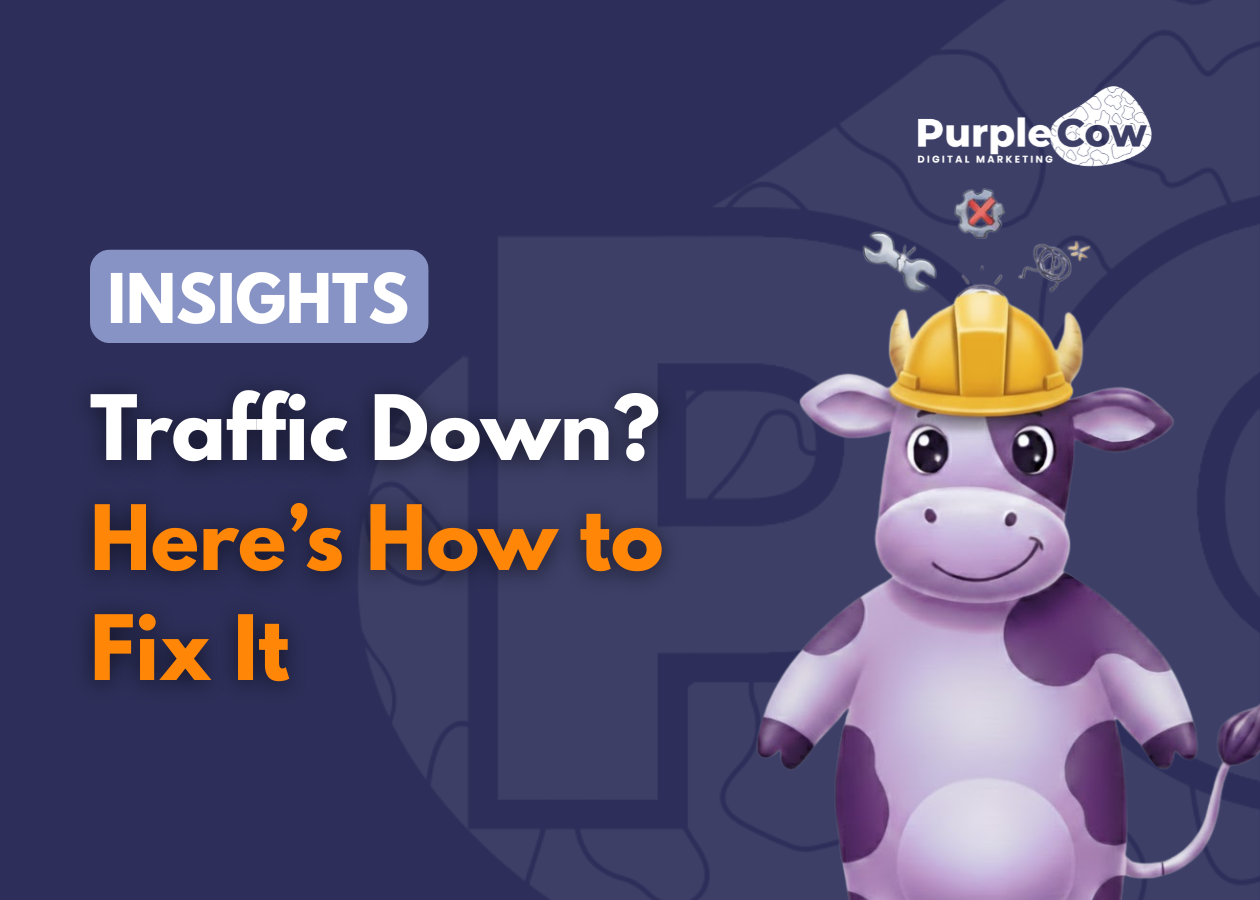In the outdoor living industry, momentum matters. When your website is performing well, the results show up in real life. Your phone buzzes with new enquiries, installers are booked out, and your brand feels alive in the local market. But when that momentum suddenly fades, it’s not just a dip in web traffic; it’s a shift you can feel across your entire business.
Maybe the online quote requests have slowed. Maybe your Google visibility has slipped, or your competitors seem to be appearing everywhere instead. Whatever the signs, a sudden drop in website traffic is like losing visibility in your own neighbourhood, meaning that the potential customers are still searching, but they’re finding someone else first.
The reasons behind it can vary, including small technical issues or major Google algorithm updates, but they all have one thing in common: they can be fixed. Let’s examine the key causes of website traffic loss for outdoor blinds and shutters businesses and explore how to turn that downward trend into renewed growth.
1. Check if the Drop Is Real
Before sounding the alarm, ensure the numbers accurately reflect a genuine decline. Sometimes, tracking tools glitch or filters change.
Start with these checks:
- Compare your data across different timeframes, such as last week versus the same week last month.
- See if the drop affects all traffic sources or just one (for example, organic search or referrals).
- Check whether your Google Analytics tracking code or Google Tag Manager script is still active on all pages.
- Make sure your website hasn’t gone offline. Expired domains, hosting downtime, or lapsed SSL certificates can make your site temporarily invisible.
If your site was inaccessible, your traffic should rebound once it’s fixed. If not, it’s time to look deeper.
2. Seasonal and Market Trends
Not every website traffic dip signals disaster. Outdoor living businesses often experience natural seasonal swings. Fewer people shop for outdoor blinds during winter or the rainy season, while spring and early summer usually bring a surge.
Use Google Analytics to compare year-on-year data. If the same period last year showed a similar dip, it’s likely a seasonal slowdown rather than a problem with your marketing. However, if this year’s drop is much steeper than previous ones, something else might be going on.
3. Google Algorithm Updates
Google updates its search algorithms several times a year. These updates aim to improve user experience but can shake up search rankings overnight.
If your website relies heavily on organic traffic, an update might explain a sudden fall in visitors.
What to do:
Avoid using duplicate or AI-generated filler text. Instead, focus on helpful, locally relevant content that answers real customer questions.
Check Google’s Search Central Blog to see if a core update has recently rolled out.
Review your content quality. Thin, outdated, or overly sales-driven pages often lose visibility after updates.
Strengthen your website’s E-E-A-T (Expertise, Experience, Authoritativeness, Trustworthiness). Add project photos, client reviews, and case studies that demonstrate your expertise in outdoor living.
4. Technical or Website Issues
Even a small technical glitch can cause a big traffic drop. Common culprits include:
- Broken links or redirects: When pages move without proper redirects, search engines lose track of them.
- Slow loading speed: Large images, poor hosting, or heavy scripts can slow your site and turn visitors away.
- Blocked pages: Misconfigured robots.txt or meta tags can accidentally stop Google from indexing your site.
- Mobile usability issues: With more than half of searches coming from mobile, a poor mobile experience can cost you rankings fast.
Run a quick audit using Google Search Console and PageSpeed Insights. If you’ve recently redesigned or migrated your site, check all redirects and sitemap submissions to ensure everything is properly indexed.
5. Lost Backlinks
Backlinks (links from other websites that point to yours) play a major role in how Google measures your site’s authority. When you lose them, your search rankings can drop, taking your website traffic with them. It often happens quietly: a directory site updates its listings, a partner removes old content, or a local blog that once featured your business goes offline. Over time, those missing links add up, and your visibility in search results begins to fade.
To diagnose this, use tools like Ahrefs, Moz, or SEMrush to check for lost backlinks and identify where they came from. If you spot valuable links that have disappeared, try contacting the site owners to have them reinstated. At the same time, focus on building new, high-quality backlinks to replace the lost ones. Collaborating with complementary businesses, such as landscapers, builders, or patio installers, or contributing to local directories and media articles can help restore your authority and steady your rankings.
6. Changes to Your Google Business Profile
For outdoor blinds businesses, local visibility is everything. If your Google Business Profile is suspended, duplicated, or shows inconsistent Name, Address, or Phone (NAP) details, your local search rankings can drop sharply.
Double-check that your profile is complete, accurate, and verified. Add new photos, collect fresh customer reviews, and post updates regularly. Even minor improvements can restore your visibility in local searches.
7. Competitors Are Gaining Ground
Sometimes, it’s not that you’ve lost visibility, but your competitors have improved theirs.. Another blinds or shutters business may have upgraded their website, invested in SEO, or launched new ads targeting your audience, quietly pushing your rankings down.
To stay competitive, keep an eye on what others in your market are doing using tools like Ubersuggest or SimilarWeb. Then, refine your own content to be more engaging and useful. For example, add clear comparisons, customer testimonials, or video demonstrations that show your expertise. Consistently updating your site with fresh, valuable content helps you maintain visibility and ensures potential customers find you first, not your competitors.

How to Recover and Prevent Future Drops
Once you’ve found the cause, build a recovery plan:
- Fix technical issues promptly and resubmit your sitemap.
- Refresh your top-performing pages with new visuals, updated copy, and calls to action.
- Monitor competitors and industry trends so you can adapt early.
- Diversify your traffic. Use social media, Google Ads, and email campaigns so you’re not fully reliant on organic search.
- Keep your Google Business Profile active and encourage ongoing customer reviews.
Consistency is the key. Regular SEO maintenance, content updates, and performance tracking prevent small issues from becoming costly problems.
Partner with Experts Who Understand Your Industry
If your website traffic has dropped and you’re unsure where to start, PurpleCow Digital Marketing can help. We specialise in digital marketing for outdoor living businesses across Australia, from outdoor blinds and shutters to patios, pools, and furniture.
Our team builds SEO strategies, websites, and campaigns designed to attract quality leads and turn them into sales.
Don’t let a traffic drop slow your growth. Reach out to PurpleCow Digital Marketing today and get your website performing at its best again.





